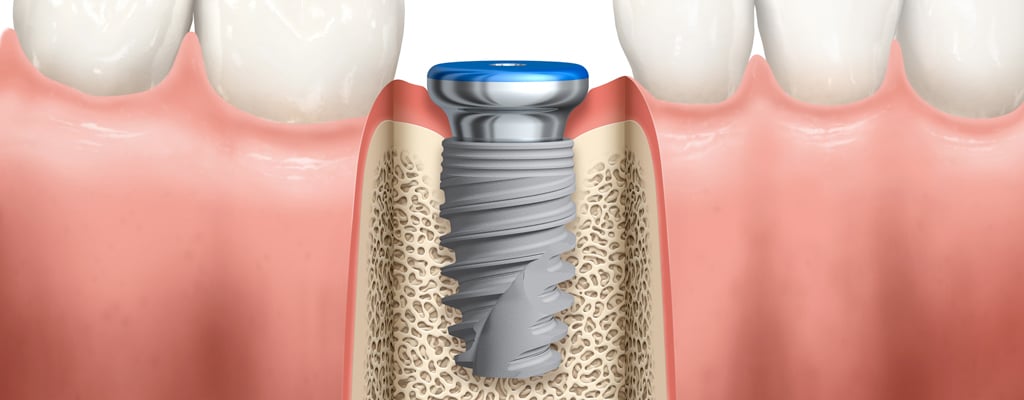Implant Dentistry is one of the most dynamic and rapidly developing areas within oral health care. Dental implants provide a predictable way to restore single missing teeth and partially edentulous and edentulous dentitions.
Treatment can closely replicate a patient’s natural teeth aesthetically and functionally. Dental implants have become an increasingly important service for many dental practices, but treatment requires extensive planning and preparation to be successful. This includes correctly managing the soft-tissue contours, which is critical for aesthetics and hygiene, and the health of these tissues.
Dental technicians are all too aware of the importance of the emergence profile in replicating the natural aesthetics of a tooth while ensuring it is easy for the patient to maintain excellent oral hygiene. Creating an ideal dental implant emergence profile matters. Read below for an explanation as to why efforts to optimize the emergence profile should begin right from the planning stage.
Why are emergence profiles so important?
 Image source: https://www.nobelbiocare.com/blog/tips-and-techniques/q-a-how-to-optimize-the-emergence-profile/
Image source: https://www.nobelbiocare.com/blog/tips-and-techniques/q-a-how-to-optimize-the-emergence-profile/
The emergence profile should be considered as a whole concept. The portion of the prosthesis allows the implant to turn into a natural-looking tooth. It is the border between the surgical and prosthetic worlds.
An excellent emergence profile gives a smooth transition from the circular implant platform to the tooth's natural shape at the gingival level.
Important factors requiring consideration to avoid compromised aesthetics:
- The presence or absence of the papilla
- Level of the mucosal margin
- Two-dimensional and three-dimensional changes of the peri-implant tissues
- Fabrication of the construction that matches the color, shape, and texture of the contralateral natural tooth
The emergence profile should be customized for every restoration.
What are the key steps to optimize the emergence profile of an abutment?
1. Choose suitable materials.
Achieving an ideal emergence profile begins with implant selection and placement. The implant diameter must suit the emergence profile of the final restoration while keeping in mind the subgingival depth to determine whether it is possible to achieve an emergence profile that resembles that of a natural tooth.
2. Correctly contour the emergence profile. The emergence profile should be contoured according to the following guidelines:
- Facial emergence: Starting from the implant shoulder, with a slightly flat/concave profile, towards the height of convexity at the point where the mucosal margin will be established.
- Interproximal emergence: Starting from the implant shoulder, with a straight emergence, towards a slight convexity just apical to the contact area, providing support for the interproximal tissue. The distance implants should be placed from natural teeth (1.5mm) and from another implant (3mm). Placing implants far enough apart allows for the dental papilla to fill in properly and help avoid black triangles.
- Palatal emergence: Starting from the implant shoulder, with a straight to slightly convex emergence, towards the mucosal margin, focusing on matching the palatal contours of the adjacent teeth so that there is a smooth transition between the two.
3. Accurately place the implant.
It’s essential to understand how the emergence profile alters how you place an implant. The connection type (external or internal) and the collar of the implant directly influence how deep an implant can be placed to preserve the surrounding bone from physiologic resorption while retaining the biologic width.
For instance, internal connections can be placed below the crest of bone, allowing more flexibility when placing the implant. Smaller platform implants should be placed deeper, leaving more vertical room to compensate for the discrepancy in diameter between the horizontal cross-section of the future crown at the gingival level and the platform itself.
Implant technology is constantly changing and improving as implant companies continually search for even better solutions to optimize the emergence profiles of abutments. Having the right dental laboratory to assist you with your dental implant treatments can be invaluable. Our experienced technical team is always willing to discuss any case with you to help you deliver the best treatments for your patients.
Click here to schedule a consultation with our technical team › 
References:
https://www.researchgate.net/publication/322709302_Optimization_of_Emergence_Profile_of_Implant_Prosthesis_A_Literature_Review
https://www.nobelbiocare.com/blog/tips-and-techniques/q-a-how-to-optimize-the-emergence-profile/
https://blog.ddslab.com/dental-implants